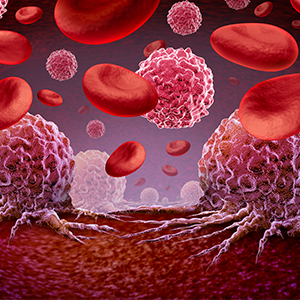-
Special Report: Common Diagnostic Tools for Heart Disease
ROCHESTER, Minn. — When heart health is a concern, many diagnostic exams are available to assess heart function. The February issue of Mayo Clinic Health Letter includes a detailed eight-page "Special Report on Cardiovascular Exams." Here are highlights:
Blood tests: Blood tests are an easy and relatively inexpensive way to look for clues about heart health. Some tests offer specific information and others indicate risk of heart disease. One commonly ordered test looks at the levels of troponin, a protein from the heart muscle. Troponin levels in the blood increase soon after heart damage occurs and remain elevated for up to two weeks.
Electrocardiogram: Also called an ECG, an electrocardiogram detects irregularities in the heart's electrical activity that could be contributing to chest pain or heart palpitations.
Echocardiogram: This ultrasound of the heart allows the doctor to see how well the heart is beating and pumping blood. It's used to identify abnormalities in the heart muscle and valves, as well as to identify areas of heart muscle damaged or weakened by a heart attack.
Chest X-ray: For patients with shortness of breath, a chest X-ray can distinguish between a heart problem, lung problem and a broken rib. A chest X-ray also can indicate signs of heart failure, congenital heart disease and heart valve problems.
Stress test: This test shows whether the arteries are moving enough blood to the heart. It's often conducted with exercise and may help evaluate symptoms such as chest pain and shortness of breath. A technician places electrodes on the chest and a blood pressure cuff on the arm to monitor heart rate and blood pressure. For patients who can't exercise, medications may be given to make the heart work harder.
Cardiac nuclear scan: Considered for patients with chest pain and inconclusive blood tests and ECG results, this exam allows doctors to see blood flow patterns to the heart. It can show clogged coronary arteries and assess the efficiency of the heart's pumping action. A normal result can be used to rule out coronary artery disease as the cause of symptoms.
To perform the test, a small amount of radioactive substance is injected through an intravenous line into a vein in the arm or hand. Once the substance is absorbed, the patient lies on a table for a series of scans. The scan is often performed with a technology called single-photon emission computerized tomography, or SPECT. Images are sent to a computer to create 3-D images.
Coronary angiogram: This procedure is considered when blood and ECG test results indicate an urgent problem with the blood vessels that feed the heart, known as coronary arteries. A short tube is inserted into the blood vessel in the groin. Using X-ray images as a guide, a doctor inserts a catheter through the tube to reach the heart and coronary arteries. The coronary angiogram can pinpoint blockages in the arteries and show how much blood flow is blocked. If needed, the physician can immediately open up the arteries or repair or replace damaged heart valves, eliminating the need for open-chest surgery.
Cardiac computerized tomography (CT): This scan shows the size and function of the heart muscle and can reveal valve problems. Patients lie on a table inside a doughnut-shaped machine. A coronary CT angiogram is sometimes used instead to check for blocked arteries. This test doesn't require a catheter in the groin. If a blockage is found, another procedure will be needed to make the repair.
Cardiac magnetic resource imaging (MRI): This approach produces clearer and more detailed images than other imaging techniques. It's used to help diagnose unexplained heart failure, monitor congenital heart disease, evaluate blood flow to the heart muscle and assess damage resulting from a heart attack. Patients lie on a table inside a long tube-like machine that produces a strong, steady magnetic field. The patient must lie very still, and the test takes longer than other imaging approaches.
To evaluate heart health, a physician will conduct a physical exam and cover family history and personal risk factors. The biggest risk factors for heart disease are smoking, high blood pressure, high cholesterol, diabetes and a family history of heart disease. The most appropriate tests will be determined based on the patient's age, overall health and signs and symptoms of heart disease.
Mayo Clinic Health Letter is an eight-page monthly newsletter of reliable, accurate and practical information on today's health and medical news. To subscribe, please call 800-333-9037 (toll-free), extension 9771, or visit Mayo Clinic Health Letter Online.
Related Articles







